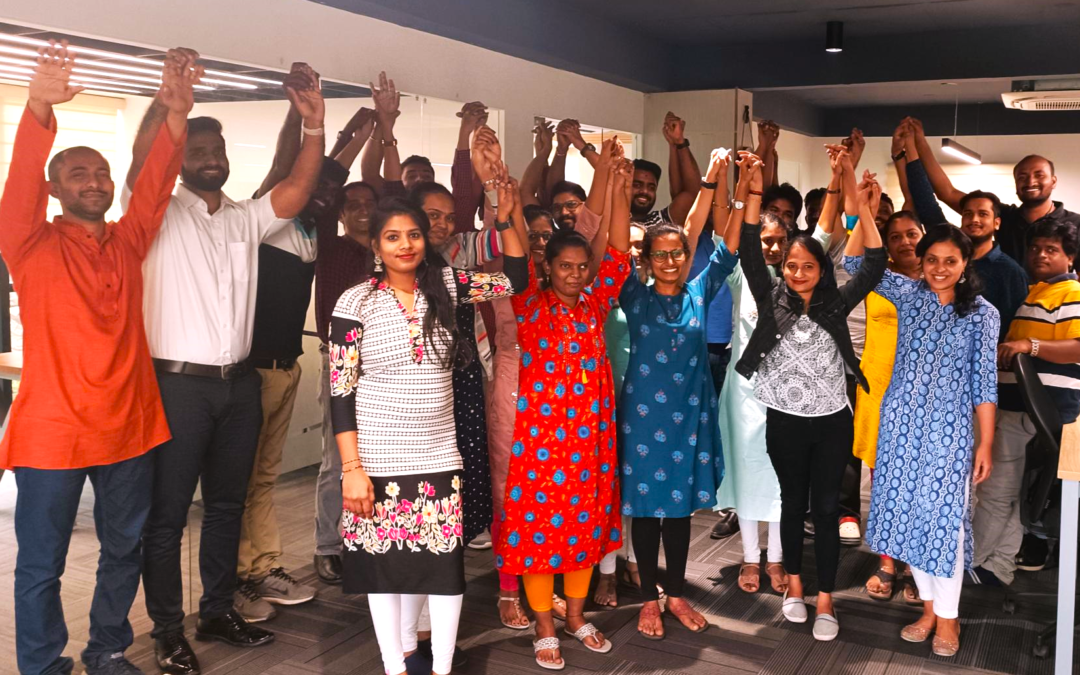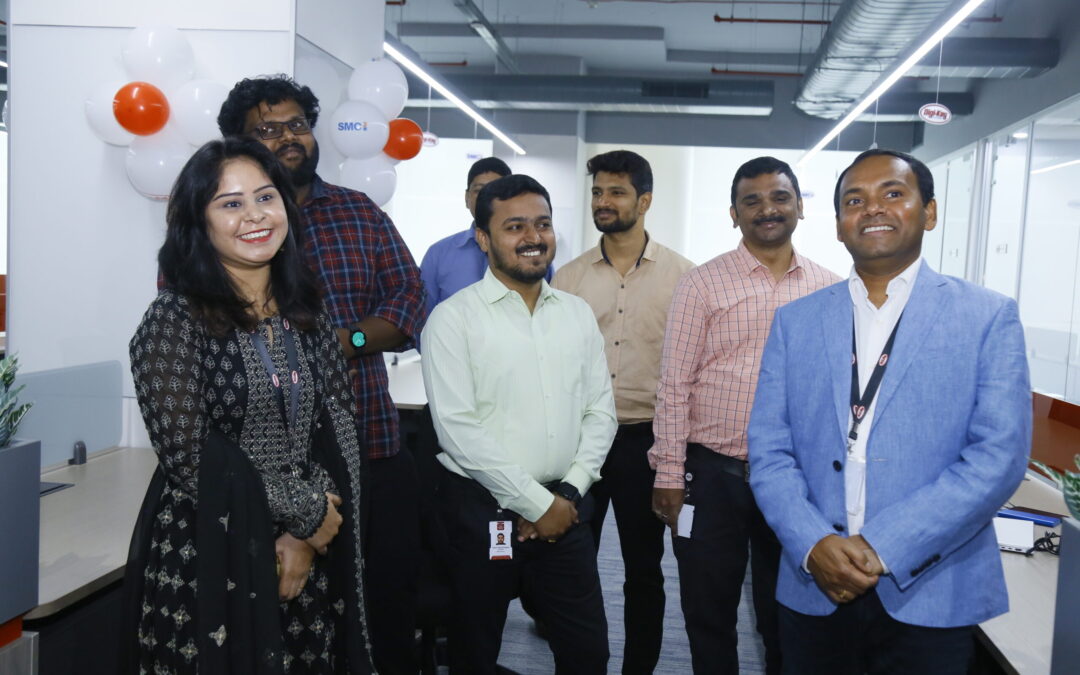
COVID-19 in India: 3 developments US CIOs should watch (and 3 steps to take now)

By Dr. Patricia Connolly and Kevin Christ
As published in CIO magazine
Editor’s note: This article is the first in a three-part series to help information technology leaders who depend on partners and suppliers in India for core information technology services better understand the current status of COVID-19 in India, the impact on offshore IT service relationships, and what actions can be taken to protect and support U.S. enterprises.
COVID-19 arrived in the Indian subcontinent several weeks later than Europe and North America, and India’s numbers remain muted to-date based on early, aggressive government policies. However, India’s population density, healthcare capacity, and infrastructure gaps leave the country exceptionally vulnerable if COVID-19 is not closely contained.
Like the U.S., the situation varies greatly between states and major cities across India. It is essential to dig beneath the headlines to understand the situation where your specific providers are based, and to monitor the situation over time.
Indian tech leaders now face the unprecedented challenge of continuing to sustain business operations uninterrupted while facing the onslaught of the global pandemic. Even the best disaster recovery and business continuity plans could not have fully anticipated this complex health, economic and technological disruption.
Following are the realities, positive and negative, informed by conversations we’ve had with on-the-ground Indian sources.
Factors to watch
India, like the U.S., is tracking the virus spread, hot zones, number of cases, and mortality rates. As of April 20, India reported 14,255 cases and 559 deaths. Nationally mandated 21-day lockdown protocols enacted on March 24 are credited with early containment. India also shut down all international travel, closed all railroads for the first time in 167 years, and restricted interstate travel. With the lockdown period now extended through May 1, and potentially well beyond, Prime Minister Modi has strictly restrained even local movement to stem the spread.
U.S. CIOs should be aware that aggressive national and local governmental policies to limit COVID-19’s impacts, are constraining the abilities of some offshore service providers to fulfill their obligations.
Indian authorities also have ramped-up screening procedures to ensure better detection of the COVID-19 disease and minimize the risk of community transmission or widespread outbreak. The health authorities continue to monitor and contain over twenty clusters across the country. To date, the highest number of cases have been detected in larger cities including Delhi, Noida, Mumbai, Chennai, Kolkata, and Hyderabad, with the high-tech center of Bangalore reporting a lesser infection rate than the remainder of India’s IT hub cities.
Strict control measures are widely expected to be maintained in the large population centers for the foreseeable months with relaxation of rules focused largely on rural, agricultural areas. With over a billion people, India reports just 0.7 hospital beds per thousand residents, well below the 2.9 beds per thousand in the U.S., 3.0 in Spain and 3.4 in Italy according to World Bank data. Many urban areas are extremely crowded, with limited sanitation and healthcare capabilities.
Watch for updates on the following to inform your exposure and potential actions:
- Lengthening of state or national lockdown periods. National policies are widely reported in the international press.
- Extension of travel restrictions, both rail and air, which are enforced rigidly. At the local level, police enforce foot travel which is limited primarily to local markets.
- Continued widespread migration from the city to smaller villages, potentially including your high-tech support resources. Fear of food shortage in large cities haven driven some to return to family homesteads for access to food and eldercare. However, often basic telecom infrastructure is absent or deficient.
U.S. technology leaders must stay abreast of ongoing developments and limitations impacting Indian IT and business sectors. Expect continuing conflict between a challenged health system and economically-driven desires to migrate the technology sector back to work and resume pre-COVID business as usual.
The following sites provide Indian national case statistics, updates on policies and focused news coverage:
- Johns Hopkins University Coronavirus Resource Center — confirmed global COVID-19 case tracker and trend information for including breakouts for each country
- S. Embassy and Consulates in India — U.S. State Department Synopsis of key facts
- Ministry of Home Affairs — Indian governmental website including state-by-state policies
- Times of India — leading source of news and headlines in India
- BBC India — objective, critical international coverage of developments in India
India outlook
India’s economic outlook remains suppressed as the government assesses health and economic policy tradeoffs. India continues to assess and lock down hotspots and highly exposed larger cities with serious concern especially for the poor residing in expansive slum areas. Eventually, an expected gradual easing of lockdowns is anticipated, similar to the U.S. but on a different timeline.
U.S. CIOs should understand that IT and IT Services may be the last industry sector to be allowed to function on-premises again. Understanding your outsourcing partner’s remote work capabilities is important to assess risks to your company’s operations.
Next steps
U.S. CIOs should immediately seek transparency and confirmation on the operational realities in India. Validated deeper awareness will enable tech leaders to make essential tactical changes to mitigate future risk. Consider the following:
- Assess business continuation plans (BCP) and status. Demand detailed information on your vendor’s actual BCP and implementation outcomes. Some providers had robust BCPs in place and executed seamlessly, while others were woefully unprepared, either not having a formal plan, not testing it, or were ill-equipped to actually support their clients through a disaster.
- Confirm team members (contractors) work locations and infrastructure access. With mass migration from cities to villages or lower tier cities, key vendor personnel may not have access to equipment or stable internet access to perform essential functions. Request a team roster to validate continuing capability.
- Evaluate productivity of remote work. Prior to COVID-19, offshore IT workers commonly worked in well-supervised large office environments. Under India’s current restrictions, assess how work is being performed, how supervision is done in a highly-distributed working mode, and how collaboration and communication are supported.
The second article in this series will expand on these points and address offshore technical and contractual commitments.
SMC² is based in the DFW Metroplex and provides global IT Services including the development of global insourcing centers with client-specific designs.
More Perspectives:

SMC2 Blog: Building an Engaged and Retained Team for Your Global Capability Center
In the journey of establishing a Global Capability Center (GCC), one of the pivotal steps, as discussed in our previous article “How to Hire the Right People for Your GCC in India”, is ensuring you have the right team on board. However, the journey doesn’t end there. As COO and Co-Founder of SMC Squared Steven Stephan emphasizes, “Initiating, recruiting, and nurturing a team that’s not just skilled but is also deeply engaged and retained is equally crucial.”

How to Hire the Right People for Your Global Capability Center (GCC)
To address this crucial need for adaptability, we proudly present GCC-as-a-Service, a game-changing approach that offers CIOs unparalleled freedom in selecting the services they need, and nothing more.

SMC Squared: Pioneering Innovation and Collaboration at NTTC 2023
To address this crucial need for adaptability, we proudly present GCC-as-a-Service, a game-changing approach that offers CIOs unparalleled freedom in selecting the services they need, and nothing more.

Introducing GCC-as-a-Service: Empowering Multinational Companies to Build and Manage Global Capability Centers with Flexibility and Ease
To address this crucial need for adaptability, we proudly present GCC-as-a-Service, a game-changing approach that offers CIOs unparalleled freedom in selecting the services they need, and nothing more.
Scale Your Tech Output: Step 1
Complimentary Strategic Assessment Meeting. Send us a message and tell us when would be a convenient time to learn more about what a Global Insourcing solution can do for your organization.
